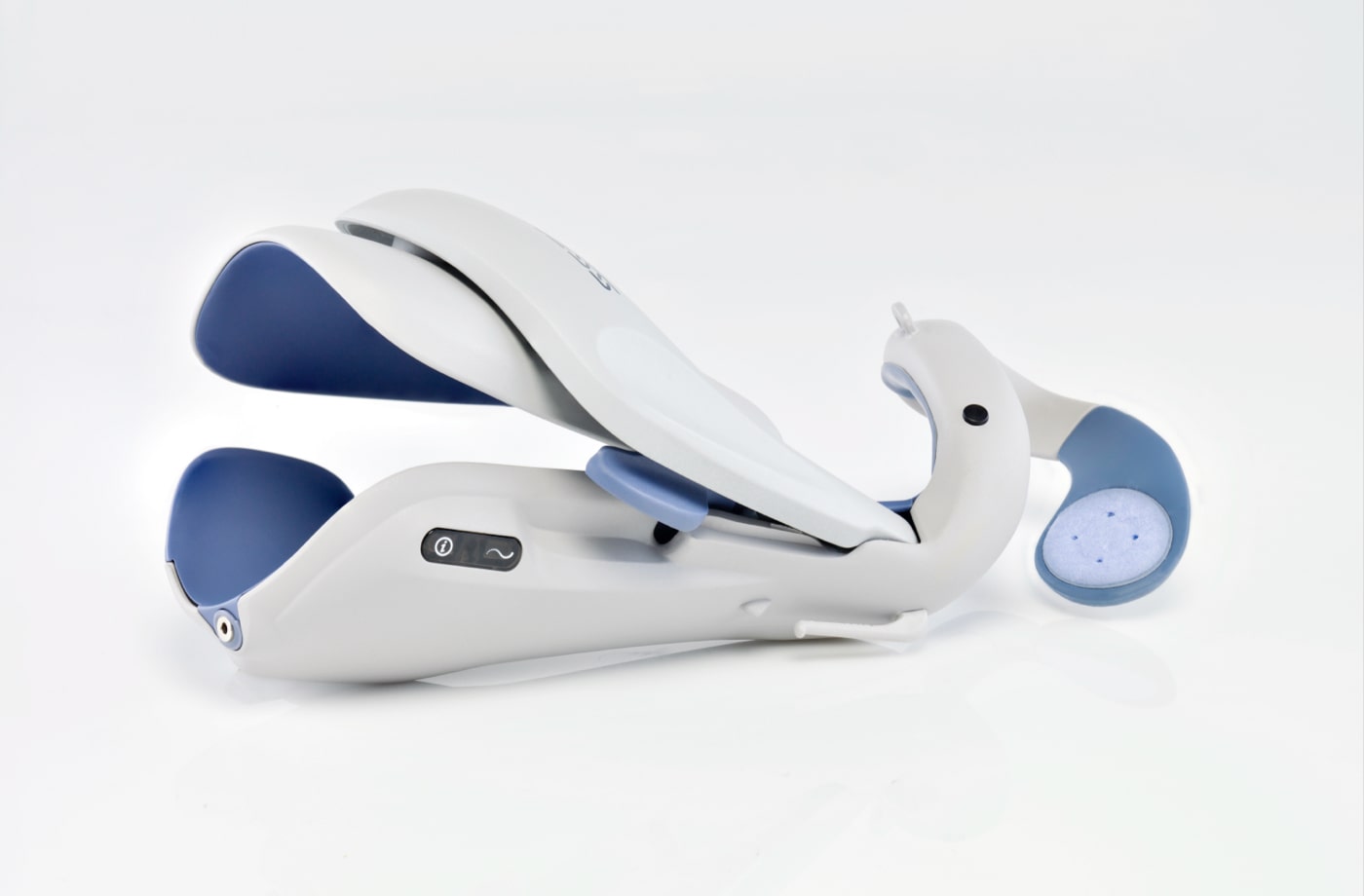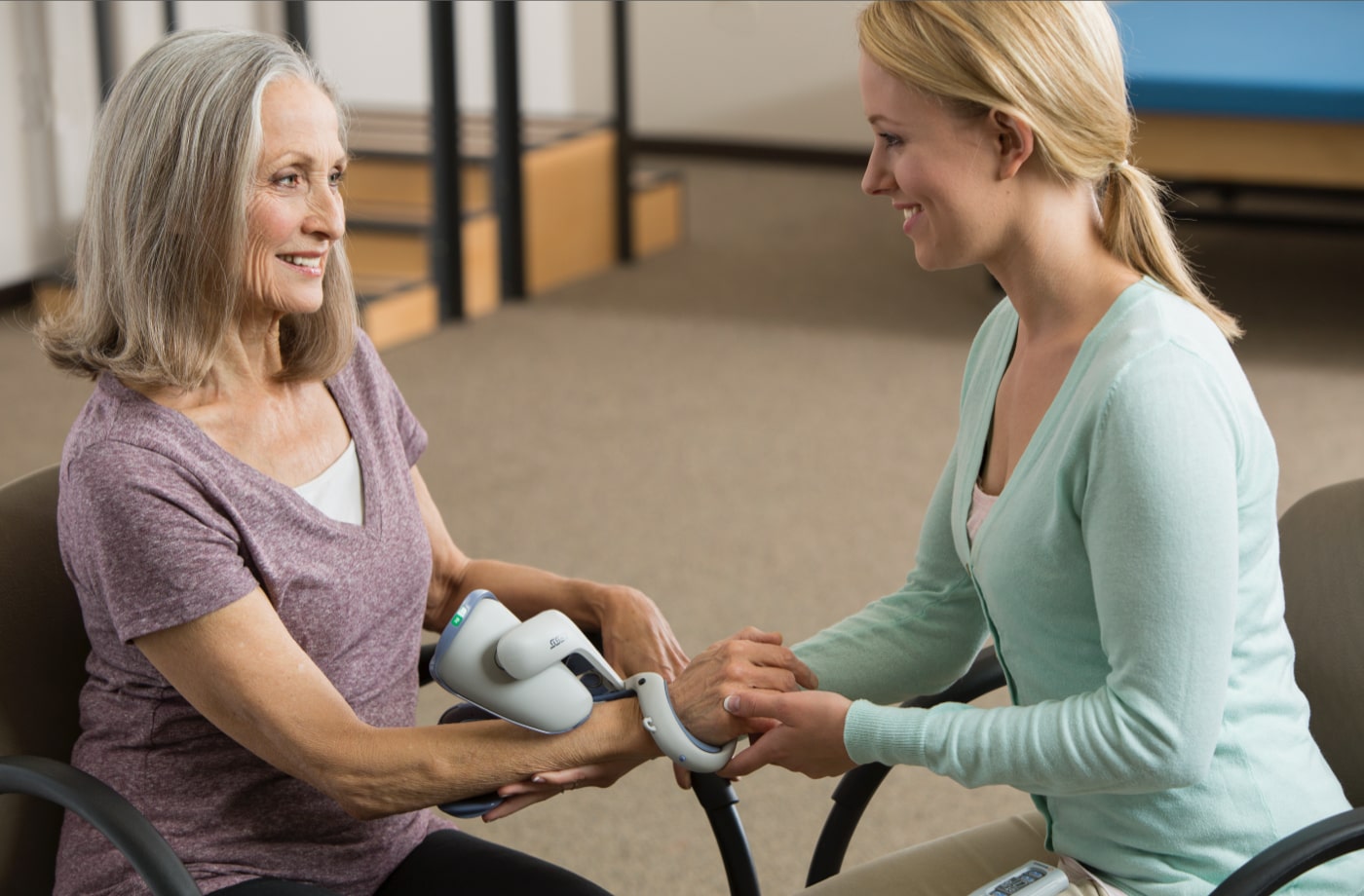H200 Wireless Technology
Technology That Transforms Patients’ Lives

Functional electrical stimulation (FES) is low-level electrical stimulation used when a muscle and its nerve supply are healthy but, due to an injury or neurological condition, communication from the brain cannot occur. In these cases, FES may replace the natural electrical signals from the brain and help reanimate the affected body part.
The H200 Wireless Hand Rehabilitation System uses FES technology to produce movements in weakened or paralyzed arms and hands. These movements mimic the patient’s natural voluntary actions of reaching, grasping, pinching, and opening and closing the hand.
FES can prevent muscle atrophy, improve local blood flow; and help maintain or increase joint range of motion. With continued stimulation over time, the brain may even recapture the movement and relearn how to perform it without FES.
According to research by
Alon et al.
“The device is designed to help patients perform therapeutic and task specific activities to improve lost hand function as a result of stroke or spinal cord injury.1-3”
The H200 Wireless can integrate easily into a patient’s daily life, encouraging patient compliance and improving outcomes.
A number of factors may affect the potential benefit of FES for an individual, such as:
- The nature and severity of the paralysis/paresis
- Length of time since the injury occurred or the condition developed
- The frequency of FES treatments

Learn how the H200 Wireless Works
The H200 Wireless Hand Rehabilitation System applies FES in a precise sequence to stimulate the nerves and muscles of the forearm and hand. Learn more about how the H200 Wireless works.
Contact us to schedule a demo with H200 Wireless or if you have questions about other Bioness products.
- Alon G, McBride K, Ring H. Improving selected hand functions using a noninvasive neuroprosthesis in persons with chronic stroke. J Stroke Cereb Dis. 2002;11(2):99-106. doi:https://doi.org/10.1053/jscd.2002.127107
- Alon G, Sunnerhagen KS, Geurts AC, and Ohry A. A home-based, self-administered stimulation program to improve selected hand functions of chronic Stroke. NeuroRehabilitation. 2003;18(3):215-225. doi:10.3233/NRE-2003-18306
- Ring H, Rosenthal N. Controlled study of neuroprosthetic functional electrical stimulation in sub-acute post-stroke rehabilitation. J Rehabil Med. 2005:37(1):32-6. doi:10.1080/16501970410035387
Indications for Use:
The H200 Wireless System is an electrical stimulation device indicated for the following uses:
- Functional Electrical Stimulation (FES)
- Improvement of hand function and active range of motion in patients with hemiplegia due to stroke or upper limb paralysis due to C5 spinal cord injury.
- NeuroMuscular Electrical Stimulation (NMES)
- Maintenance and/or increase of hand range of motion; Prevention and/or retardation of disuse atrophy; Increase in local blood circulation; Reduction of muscle spasm; Re-education of muscles.
H200 Wireless is contraindicated in patients with a demand-type cardiac pacemaker, defibrillator or any electrical implant. Do not use the system on a hand where metallic implant is directly underneath the electrodes, a cancerous lesion is present or suspected, or on a hand with regional disorder (e.g., fracture or dislocation) which could be adversely affected by motion from the stimulation. Use caution in patients with diagnosed or suspected cardiac problems or epilepsy.
Full prescribing information can be found in product labeling or at bionessrehab.com/ous/h200/safety-information/.
Instructions for Use / Patient Guides and Reference Cards can be made available upon request.
Contact [email protected] to request an electronic copy.

